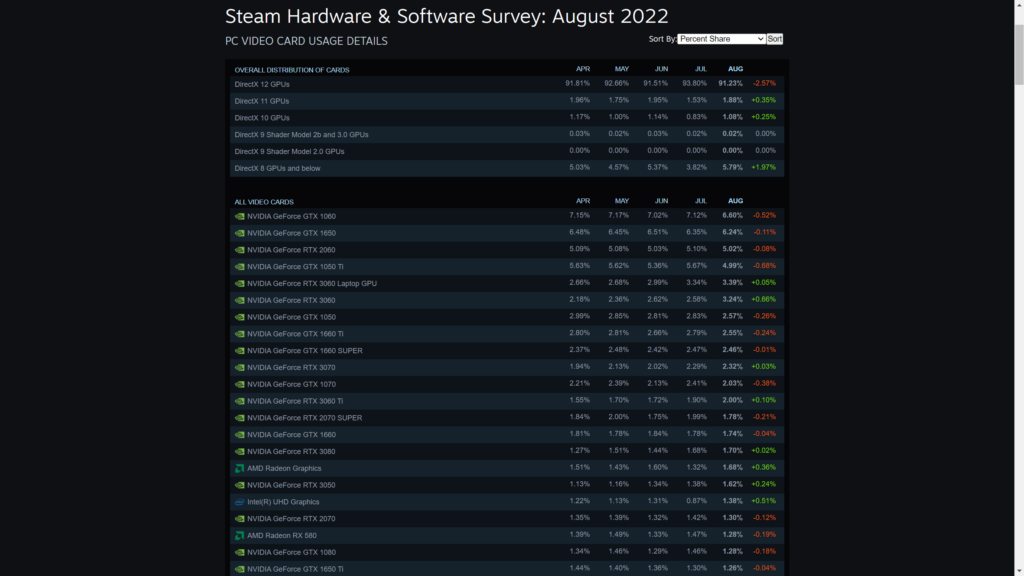Ctrl+Alt+Delete: It’s the perfect time for Intel’s budget graphics cards

OPINION: When Intel first announced that it was going to enter the discrete graphics card market, I have to admit that I was pessimistic.
Added competition is always great for consumers, but I struggled to see how Intel could quickly catch up to the likes of AMD and Nvidia, which have both spent years and years perfecting game drivers and technologies such as ray tracing. And even in terms of raw performance, it’s going to be hard to knock Nvidia off its perch.
But Intel has started to win me over, especially since offering more detail about its upcoming Arc graphics cards. The main reason for this is that Intel isn’t attempting to displace AMD and Nvidia as the go-to brand for high-end graphics cards. Instead, Intel is hoping to appeal to another market by producing budget-friendly options.

In October, Intel will launch three graphics cards: A750 ($289), A770 ($329) and A770 Limited Edition ($349). As you can see, even the most expensive graphics card in the range will be available at an extremely affordable price compared to other graphics cards.
For example, the new Nvidia RTX 4090 will cost a staggering $1599/£1679, while the RTX 4080 has a starting price of $899/£949. Of course, such graphics cards will offer a very powerful performance to try and justify the cost, but they’re still likely too pricey for the vast majority of people.
That’s not to say that AMD and Nvidia don’t offer more affordable graphics cards too. The Nvidia RTX 3050 and Nvidia RTX 3060 launched at $249/£239 and $330/£300 respectively, while the AMD Radeon RX 6600 is priced at $329/£299.
But it’s refreshing to see that Intel is making budget-friendly graphics cards its main priority.

When Nvidia unveiled the RTX 4090 and RTX 4080, it was difficult to get too excited since the prices were so incredibly high. With no reveal of a more affordable RTX 4060 or RTX 4070 just yet, it feels like they were an afterthought.
I totally understand that Nvidia is keen to show off the potential of the new Lovelace architecture, but I also worry such a tactic is making the vast majority of its user base feel alienated.
According to the latest Steam Hardware & Software Survey, the top five graphics cards used to play games in August 2022 included the Nvidia GTX 1060, GTX 1650, RTX 2060, GTX 1050 Ti and RTX 3060. Those five graphics cards represented a whopping 26.09% of the surveyed player base. Only 1.70% of players used an RTX 3080, and 0.50% used an RTX 3090, making them incredibly niche options.
Those results aren’t too surprising. A budget-friendly graphics card is particularly appealing right now, with bills rising right, left and centre. It’s not a great time to be making extravagant purchases, as who knows what our energy bills could like this time next year.

This makes it a perfect time for Intel to release its budget-friendly Arc lineup, rather than launching competitors to AMD and Nvidia’s most powerful graphics cards.
That’s not to say Intel will have guaranteed success with the Arc range, as it must prove the graphics cards are capable of a good enough performance to be genuinely great alternatives to the Radeon RX 6600 and RTX 3060 GPUs.
It’s looking promising though, with Intel claiming the upcoming A750 GPU will see a similar, if not better, performance to the RTX 3060, with significant gains for optimised games such as Metro Exodus (+28%), Dying Light 2 (+22%) and F1 2021 (+23%).
The Intel Arc series will also support ray tracing, while a rival solution to Nvidia DLSS will also be available in the form of XeSS.
Of course, we can’t really trust these figures until we’re able to benchmark the graphics cards ourselves. But if Intel is able to offer even better value than Nvidia’s RTX 3060, then it could be onto a winner.
Ctrl+Alt+Delete is our weekly computing-focussed opinion column where we delve deeper into the world of computers, laptops, components, peripherals and more. Find it on Trusted Reviews every Saturday afternoon.








